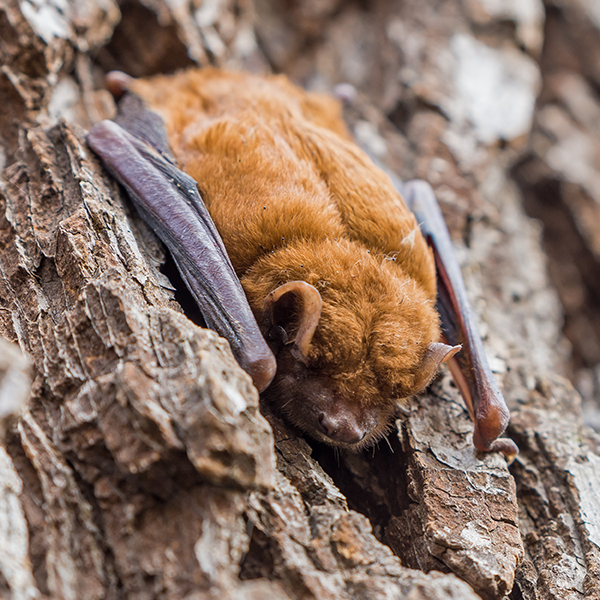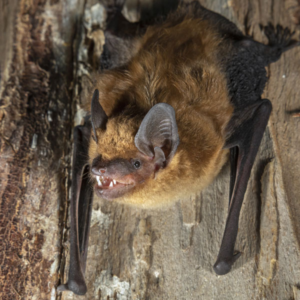Little Brown Bats in Iowa
Weighing less than half an ounce, little brown bats are one of the smallest species. Though they’re found across the United States, they are more common in northern regions, including Iowa. Colonies often grow to tens of thousands and they are not very territorial. Little brown bats also use echolocation to find prey, which usually consists of insects such as mosquitoes and flies. In recent years, little brown bats in Iowa have faced significant threats due to the spread of white-nose syndrome (WNS), a fungal disease that affects bat populations. This disease has caused substantial mortality in hibernating bats, making them a protected species.
Little Brown Bat Habitat
Little brown bats often roost in buildings, attics, barns, or other structures with suitable crevices and hiding places. Females also form maternity colonies in during the summer, typically in buildings or natural structures like tree cavities. They play a vital role in regulating insect populations, including agricultural pests, by consuming large numbers of insects each night. Since they are more common in suburban areas, they can be dangerous for homeowners across Iowa.
Little Brown Bat Behaviors, Threats, or Dangers
Little brown bats aren’t aggressive by nature, though they will bite if cornered or panicked like most wild animals. Due to their endangered nature, it’s crucial to leave control and removal up to the professionals. If you notice a bat has made its way into your building, never approach it or attempt to handle it yourself. Always call a professional wildlife control company.
Need help with Little Brown Bat control?
We'll call you! Leave your information below.


